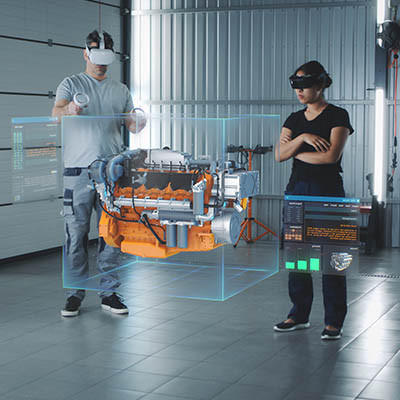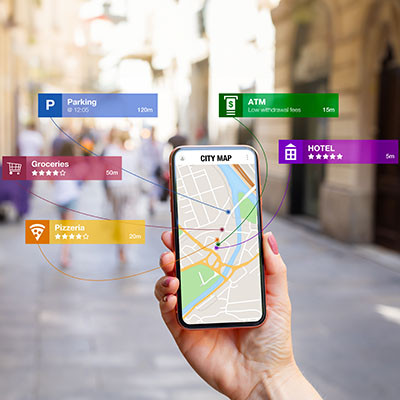VoIP, or Voice over Internet Protocol, is great. It can be a pivotal tool to help you transform your business’ communications infrastructure, provided you implement it with intention. Today, we want to share three of the biggest benefits your business can expect to enjoy from switching to a VoIP solution.
Datalyst Blog
The entire purpose of modern IT is to improve the processes that work requires us to do. Today, we wanted to address a few business priorities—productivity, cybersecurity, and accessibility—that the right tech can help you accomplish, explicitly exploring how different tools can contribute to your success.
New technology is always a bit intriguing. It can also be scary for some. Business owners typically only see the cost, even if it presents solutions to their organizational problems and can err on the side of caution as to not too much strain on their budget. There are a couple of really cutting-edge technologies businesses can use today that can help them confront problems they have. Let’s take a look at them in today’s blog.
In business, innovation and productivity go hand-in-hand. When you think outside the box, you open up new ways to get things done faster, smarter, and more effectively. In this month’s newsletter, we thought we’d discuss five innovative strategies to help your business reach new levels of productivity.
Businesses of every size need to prioritize their security. This fact has not changed and will not change anytime soon. What has changed, however, are the recommended ways to approach this security.
Today, we wanted to review the history of today’s predominant cybersecurity advice and explore how the zero-trust security model applies.
You might remember the buzz when Josh Allen, a digital artist, won first place at the 2022 Colorado State Fair for his digital artwork called "Théâtre D'opéra Spatial." The catch? He created the image using AI. Now, he’s in a fight with the Copyright Office to prove that his work deserves copyright protection.
The tech we have at our fingertips has the potential to dramatically enhance our productivity, support a great deal of creativity, and improve a person’s overall quality of life. What happens when you don't use this technology to its full potential? The answer is simple: you lose out. Let’s take a look at some of the negative effects of not using tech to its fullest.
Nowadays, finding a business that does not use technology in its everyday processes would be extremely challenging. That’s just how things are today. This technology also typically sees advances in capabilities and accessibility, particularly for the small and medium-sized business sectors. This year, 2024, seems poised to be no exception.
Augmented reality is one of the more intriguing technologies that have come along in recent years, and businesses have begun to use it in pretty interesting ways. In today’s blog, we thought we’d go through three of the most popular and effective use cases of AR and the effect it can have on your business.
Change is inevitable, especially in the dynamic world of business, where it is the driving force behind growth and innovation. Yet managing change can be a daunting task. It requires strategic planning, effective communication, and strong leadership.
This is where change management optimization comes into play. It's about refining your approach to change, making it more efficient and successful… particularly when it involves your IT and related processes.
You’ve probably heard of augmented reality by now. If you are a fan of sports on TV, especially. Every time your favorite team faces a 4th and 1, the lines that you may take for granted on the field is AR. It augments the image with overlays of information that makes what you are looking at more immersive. As businesses continue to evolve, integrating augmented reality can be a game-changer. Let's explore four compelling ways in which augmented reality can work wonders for businesses.
Your business’ data holds incredible potential for helping you improve operations, but only when it is leveraged properly. To this end, you have to identify specific metrics that you are working toward and establish how these metrics are helping you make strides forward. IT offers plenty of metrics to help you make better decisions about operational efficiency.
A digital twin could arguably be seen as a somewhat niche technological innovation. Regardless, they are an invaluable resource to quite a few industries that help the businesses that use them optimize their processes. Let’s go over what a digital twin is, and how it helps a few different business types meet their needs.
Many of us techno-nerds get excited about new innovations in technology. Over the past few years I’ve been tuning into the Consumer Electronics Show, a massive yearly expo in Las Vegas where exhibitors show off their latest and greatest in consumer electronics. The event covers everything you can imagine, from smart kitchen appliances to new tablets and phones, conceptual car models to personal flying vehicles.
It’s a fun spectacle, and even if you don’t care for technology too much, you can play a really interesting version of Bingo and try to predict what common household objects are going to get screens on them this year.
One particular new product stole the show though; the Rabbit R1 AI device. I think it’s worth talking about.
Information technology has become a ubiquitous tool employed by almost every organization. The ability to adapt and improve operations has become critical for maximizing productivity and creating an environment conducive to success. The pursuit of innovation, however, often considered essential, may actually hinder productivity. This month, we explore how blindly innovating might not always be the optimal path for steering your business toward success.
Happy New Year! It’s officially that time when we all make resolutions meant to help improve ourselves, so why not include your business? Better yet, why not make business resolutions that you’re more likely to keep?
Let’s explore some of the ways that you can design your business’ resolutions to maximize the likelihood that you’ll keep them and benefit from them in the long term.
The workplace has undergone a dramatic shift over the past several years in favor of remote work, due in no small part to worldwide circumstances. In fact, many workers who would prefer to work in-office found themselves unable to, pushing the button on the topic of remote work even more. While there are some outspoken companies that want to see the return of in-office work, experts in the industry seem to be of the opposite opinion.
We’re at a weird point in the technology world (but honestly, when is it not at least a little convoluted?). Right now, modern technology has been slowly shifting between a few different technologies and consumers and businesses are stuck in the middle trying to figure out what to do and how to future-proof their hardware investments.




















